 If you were to ask a dozen of my closest friends and family members “Who is the most frugal person that you know?” in all likelihood most, if not all, would respond “Bob!”. Yes, I’m that guy who wears the same clothes until they are riddled with holes before even considering a thrift store replacement. I save soap shavings, watch broadcast television, clip coupons, drive an old car, bring food to the movie theater (on the rare occasion that I actually pay for a ticket) and… Okay, you get the idea.
If you were to ask a dozen of my closest friends and family members “Who is the most frugal person that you know?” in all likelihood most, if not all, would respond “Bob!”. Yes, I’m that guy who wears the same clothes until they are riddled with holes before even considering a thrift store replacement. I save soap shavings, watch broadcast television, clip coupons, drive an old car, bring food to the movie theater (on the rare occasion that I actually pay for a ticket) and… Okay, you get the idea.
Being what most consider an “extreme cheapskate” and a self-proclaimed expert on anti-snoring devices, I figured that I would be the most qualified person to answer the question “Who sells the cheapest mouthpieces for snoring?”
The least expensive snoring mouthpiece options
The truth is when it comes to most products that we purchase it’s reasonable to say that the cheapest product will usually get the job done. This is especially true if you only plan to use the product on occasion or perhaps just once. In such cases, it only makes sense to go with the least expensive option.
When initially introduced to anti-snoring mouthpieces my quest was to find the cheapest device and give it a try. There were a handful of websites that were selling these devices for as little as $5 shipped including:
![]()
Personal experience buying “cheap”
I ended up ordering 2 devices, one from eBay and the other from Amazon at a combined total cost of $17 including shipping. Both products arrived around the same time and both were unbranded with ambiguous instructions which were written in broken English.
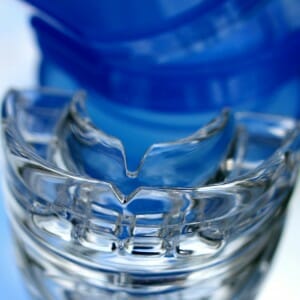
This commonly found inexpensive device does not advance the jaw
While marketed as a “mouthguard for snoring”, one of these products was actually a teeth grinding night guard which does not offer a jaw advancement feature. Mouthguards that prevent snoring all work using the same principle – by holding the lower jaw slightly forward, widening and clearing the airway. Because of their function, they are also known as Mandibular Advancement Devices. Without advancement, they offer no benefit when it comes to preventing snoring. Many people mistakenly believe that anti-snoring mouth devices, sports mouthguards, and teeth grinding guards are all one and the same. While they may appear similar in nature on the surface, each product varies slightly in design and function. You can read more about the difference between each type of device.
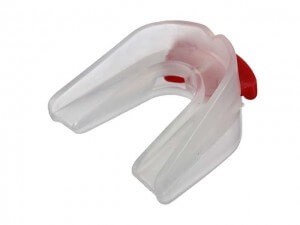
An example of a cheap no-name device
I acquired the second device at a total cost of $5 and it left me with more questions than answers. The first item of concern was the smell of the product. It had a strong chemical/plastic odor that was impossible to ignore. The product packaging contained limited instructions and offered absolutely no information on the company who produced it or the type of plastics used in production. For all, I know it may have been produced in a third-world country from melted down shoe rubber. When asked, the seller was unable to provide any specific information on this product.
Typically, the unknown nature of such a product would not concern for me. However, it’s important to understand that a snoring device will be inserted into your body for 8-10 hours per night, every night. As for mass-produced mystery devices, there is a huge potential for chemicals in the plastic to leach out or possible safety concerns such as choking. Ultimately, I decided to pass on both devices for the mentioned reasons. While never used, both sellers would not accept a return because it was a personal product.
5 tips for buying inexpensive mouthguards for snoring
 I decided to bite the proverbial bullet and purchase from a reputable manufacturer who was more transparent with their product. Since doing so I have not encountered any quality issues or received any mysterious devices in the mail. I understand that there are some who are willing to accept the risks of buying such a device. To these people, I offer a few words of advice when looking for an inexpensive snoring mouthpiece:
I decided to bite the proverbial bullet and purchase from a reputable manufacturer who was more transparent with their product. Since doing so I have not encountered any quality issues or received any mysterious devices in the mail. I understand that there are some who are willing to accept the risks of buying such a device. To these people, I offer a few words of advice when looking for an inexpensive snoring mouthpiece:
- Only buy a device if it’s labeled as Bisphenol A (BPA) free. While there is a bit of debate surrounding the use of BPA in products, it’s best to steer clear of devices which contain these potentially harmful compounds. Do your homework and ensure that the device in question is not intentionally mislabeled as “BPA Free”.
- Trust devices that have been approved by a regulatory agency such as the Food and Drug Administration (FDA), Australian Register of Therapeutic Goods (ARTG), or the Therapeutic Products Directorate (TPD). In order to be approved, the device must meet certain safety standards and in most cases, the type of materials used must be disclosed. Once again, do your homework. If an FDA # is provided, double check with the FDA website to ensure that you are dealing with the same product being described by the seller.
- Avoid no-name devices. There is a popular style of mouthpiece being mass produced in countries such as China. These devices are not branded and are often sold for $5 or less. When marketed with a simple name such as “Anti-snoring Mouthpiece” or something similar, you can be assured that you are dealing with a product that has been cheaply produced and likely contains inferior and potentially toxic materials.
- Know what you are buying. There are multiple stop snoring devices currently being sold on eBay and Amazon that actually are sport mouthguards and will not stop snoring. Remember, stop snoring mouthguards have a lower tray that extends beyond the upper teeth. Without advancement, you will still experience snoring. Read the feedback received from buyers. Many will note if they received a night guard for teeth grinding or sports guard instead of one made for snoring.
- While not necessary, select a manufacturer who offers proof of clinical studies. Those who are willing to go the extra mile and conduct clinical trials are likely a more reputable source. While only a handful of manufacturers have actually taken this extra step, it can be a strong indicator of quality.
Overall thought on taking the less expensive route
 While it’s easy to skimp on many products that we purchase every day, in my opinion, an anti-snoring mouthguard should not be on this list. In this particular instance, you typically get what you pay for meaning that a non-toxic, government approved device that is safe to use will cost you more than $5-$10. I have created a helpful resource that allows you to compare several stop snoring products that are popular and generally safe to use.
While it’s easy to skimp on many products that we purchase every day, in my opinion, an anti-snoring mouthguard should not be on this list. In this particular instance, you typically get what you pay for meaning that a non-toxic, government approved device that is safe to use will cost you more than $5-$10. I have created a helpful resource that allows you to compare several stop snoring products that are popular and generally safe to use.
As always, I’m in search of cheap alternatives but have yet to come across any that I feel safe using. If you have discovered an inexpensive snoring product that meets the above criteria I invite you to share your experience. Please leave a comment below.
Share This Post:
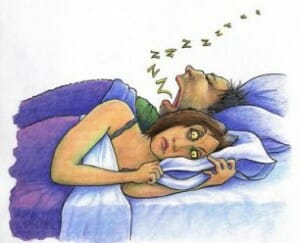 A common question often asked by snorers is “What is the difference between plain loud snoring and
A common question often asked by snorers is “What is the difference between plain loud snoring and 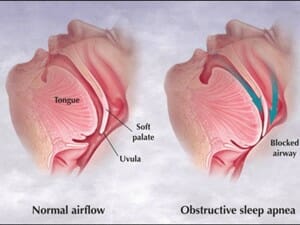 As mentioned, sleep apnea occurs when an individual stops breathing for several seconds and in some cases minutes. This occurrence is commonly referred to as an “apneic event”. There are three different types of sleep apnea:
As mentioned, sleep apnea occurs when an individual stops breathing for several seconds and in some cases minutes. This occurrence is commonly referred to as an “apneic event”. There are three different types of sleep apnea: Most individuals may have never even heard of sleep apnea or are even able to recognize some of the signs that they may have an issue. Why is this the case? Well, since apneic events occur while asleep, you are obviously not awake while this is happening. This makes it difficult to pinpoint exactly when it occurs.
Most individuals may have never even heard of sleep apnea or are even able to recognize some of the signs that they may have an issue. Why is this the case? Well, since apneic events occur while asleep, you are obviously not awake while this is happening. This makes it difficult to pinpoint exactly when it occurs. In addition to lack of awareness on the individuals part, some suggest a lack of awareness from general practitioners. While the prevalence of sleep apnea has been known for several years now, there are numerous physicians who allow their patients to miss a proper diagnosis simply because they are not considering the possibility that sleep apnea may be causing some issues that their patients are experiencing.
In addition to lack of awareness on the individuals part, some suggest a lack of awareness from general practitioners. While the prevalence of sleep apnea has been known for several years now, there are numerous physicians who allow their patients to miss a proper diagnosis simply because they are not considering the possibility that sleep apnea may be causing some issues that their patients are experiencing.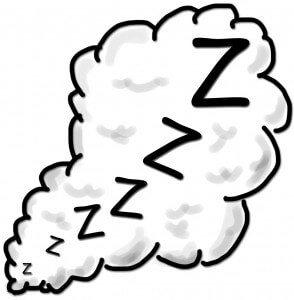 Snoring, more specifically benign snoring is much easier to define in comparison to sleep apnea. Simple snoring occurs when the tissues in the throat and airway flap against each other. This creates the sound that most of us are familiar with. Once again, it’s entirely possible to have sleep apnea and snore at the same time. In fact, snoring is a sign of sleep apnea. If you are a light, moderate, or an even heavy snorer, you should not simply write off a snoring issue as simply benign.
Snoring, more specifically benign snoring is much easier to define in comparison to sleep apnea. Simple snoring occurs when the tissues in the throat and airway flap against each other. This creates the sound that most of us are familiar with. Once again, it’s entirely possible to have sleep apnea and snore at the same time. In fact, snoring is a sign of sleep apnea. If you are a light, moderate, or an even heavy snorer, you should not simply write off a snoring issue as simply benign. If you are considering the use of a snoring mouthpiece or Mandibular Advancement Device (MAD) to treat your snoring, it’s imperative that you know the difference between OSA and simple snoring. After all, simple snoring is usually harmless while OSA can cause of a number of health concerns such as high blood pressure, heart attack, stroke, obesity, diabetes, and the list goes on.
If you are considering the use of a snoring mouthpiece or Mandibular Advancement Device (MAD) to treat your snoring, it’s imperative that you know the difference between OSA and simple snoring. After all, simple snoring is usually harmless while OSA can cause of a number of health concerns such as high blood pressure, heart attack, stroke, obesity, diabetes, and the list goes on.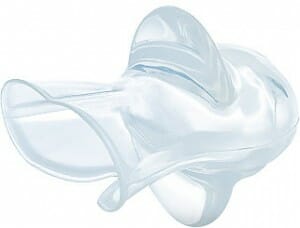
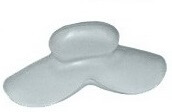
 If you currently use a MAD and have become accustomed to wearing a one, it may take a few days to adjust to a TSD. Most who use this type of anti-snoring device experience some tongue soreness during the initial 3 to 5 days of use. Once adjusted, they are fairly comfortable to wear on a nightly basis.
If you currently use a MAD and have become accustomed to wearing a one, it may take a few days to adjust to a TSD. Most who use this type of anti-snoring device experience some tongue soreness during the initial 3 to 5 days of use. Once adjusted, they are fairly comfortable to wear on a nightly basis. There is no denying that both devices can be a great choice when it comes to controlling the sounds associated with snoring. Both have received numerous praises from snoring suffers from around the world. So which one is better? How do you decide which one to purchase?
There is no denying that both devices can be a great choice when it comes to controlling the sounds associated with snoring. Both have received numerous praises from snoring suffers from around the world. So which one is better? How do you decide which one to purchase? It’s 3 am and you’ve been wide awake, listening to the sound of your partner snoring the night away. You turn on the TV and suddenly a late night infomercial seems to be speaking directly to you.
It’s 3 am and you’ve been wide awake, listening to the sound of your partner snoring the night away. You turn on the TV and suddenly a late night infomercial seems to be speaking directly to you.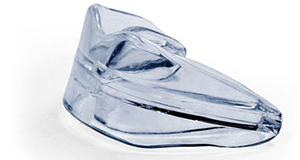
 Mandibular advancement devices or snoring mouthguards have been around for several years now so they must be effective right? Would people really continue to purchase a product that does not work? The truth is, many such devices really do work. Numerous scientific studies have been conducted to measure the effectiveness of MAD’s on snoring. These studies were conducted using a range of different products from professionally fitted to over the counter. While the results sometimes varied, almost every study concluded that jaw advancing mouthpieces were quite effective at treating snoring. Most studies showed a success rate of between 75% – 85% or greater. I’ve
Mandibular advancement devices or snoring mouthguards have been around for several years now so they must be effective right? Would people really continue to purchase a product that does not work? The truth is, many such devices really do work. Numerous scientific studies have been conducted to measure the effectiveness of MAD’s on snoring. These studies were conducted using a range of different products from professionally fitted to over the counter. While the results sometimes varied, almost every study concluded that jaw advancing mouthpieces were quite effective at treating snoring. Most studies showed a success rate of between 75% – 85% or greater. I’ve 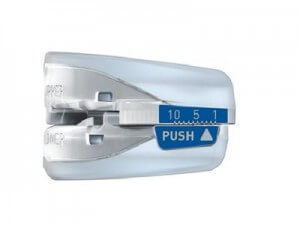
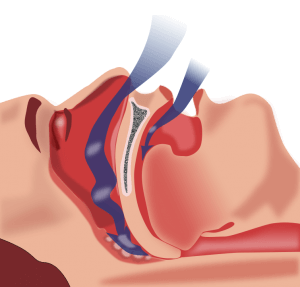 On the surface, most of these devices are strikingly similar to an athletic mouthguard or a night guard used for teeth grinding. While these products are similar in appearance, they differ greatly when it comes to function. Athletic mouthguards and night guards simply form a protective barrier to prevent damage to the teeth. A snoring mouthpiece actually holds your lower jaw slightly forward as you sleep. The forward or “advanced” position pulls on the throat and airway muscles. The pulling effect causes the muscles in the airway to tighten. In most cases, loose tissues and a narrow airway are the main sources of the sound of snoring. With the jaw forward, muscles and tissue are tightened, preventing the narrowing of the airway or flapping of tissue.
On the surface, most of these devices are strikingly similar to an athletic mouthguard or a night guard used for teeth grinding. While these products are similar in appearance, they differ greatly when it comes to function. Athletic mouthguards and night guards simply form a protective barrier to prevent damage to the teeth. A snoring mouthpiece actually holds your lower jaw slightly forward as you sleep. The forward or “advanced” position pulls on the throat and airway muscles. The pulling effect causes the muscles in the airway to tighten. In most cases, loose tissues and a narrow airway are the main sources of the sound of snoring. With the jaw forward, muscles and tissue are tightened, preventing the narrowing of the airway or flapping of tissue. Purchase denture cleaning tablets from your local pharmacy. You can buy the generic store brand or name brands such as Efferdent or Polident. These are fairly inexpensive, costing around $6 for a 90 day supply. Fill a container up with cold water and dissolve the cleaning tablet. Place the GMSS into the denture cleaning solution for 10 minutes. Next, give the container a swirl prior to removing the device and rinsing. Allow to air dry on a fresh paper towel.
Purchase denture cleaning tablets from your local pharmacy. You can buy the generic store brand or name brands such as Efferdent or Polident. These are fairly inexpensive, costing around $6 for a 90 day supply. Fill a container up with cold water and dissolve the cleaning tablet. Place the GMSS into the denture cleaning solution for 10 minutes. Next, give the container a swirl prior to removing the device and rinsing. Allow to air dry on a fresh paper towel.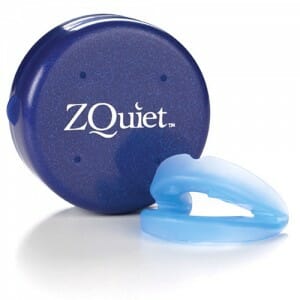
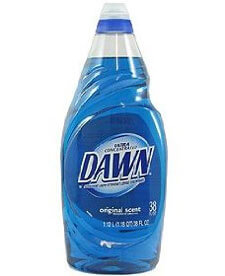 Clean the Zquiet using a mild liquid dish soap such as Dawn, Palmolive, or Ivory. I prefer to use a soap that has anti-bacterial properties. Clean the device using your fingers and the liquid soap. For best results, the manufacturer suggests that you use a toothbrush to assist with cleaning. While a toothbrush is recommended, toothpaste is not because it can discolor or even distort the surface of the Zquiet.
Clean the Zquiet using a mild liquid dish soap such as Dawn, Palmolive, or Ivory. I prefer to use a soap that has anti-bacterial properties. Clean the device using your fingers and the liquid soap. For best results, the manufacturer suggests that you use a toothbrush to assist with cleaning. While a toothbrush is recommended, toothpaste is not because it can discolor or even distort the surface of the Zquiet.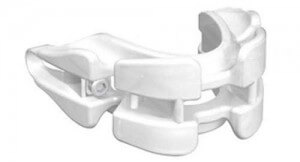 There are two methods that can be used to clean the Vitalsleep:
There are two methods that can be used to clean the Vitalsleep: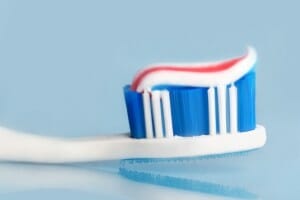 Using warm water, clean the device with a toothbrush and toothpaste. The water should be “warm” to the touch and not hot. Place a dab of toothpaste on the Vitalsleep and clean as you would your teeth. Be sure to brush in all of the crevices as this device contains several places where bacteria can hide. Once finished, rinse the device and allow it to air dry on a paper towel before storing it away in the provided storage case.
Using warm water, clean the device with a toothbrush and toothpaste. The water should be “warm” to the touch and not hot. Place a dab of toothpaste on the Vitalsleep and clean as you would your teeth. Be sure to brush in all of the crevices as this device contains several places where bacteria can hide. Once finished, rinse the device and allow it to air dry on a paper towel before storing it away in the provided storage case.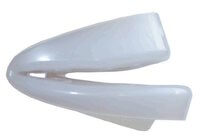
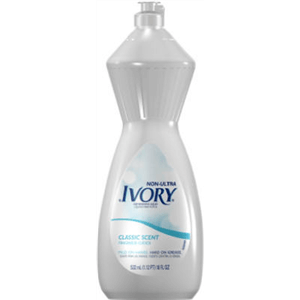 Clean your Snoremender using a mild dish soap such as Dawn, Palmolive, or Ivory. Antibacterial soaps are the best choice for this particular application. Use warm tap water along with the soap and your fingers to gently clean the surface of this mouthpiece. Keep in mind that you should never use water warmer than 158° as it can distort the overall shape of the device. The water should be warm to the touch but not hot.
Clean your Snoremender using a mild dish soap such as Dawn, Palmolive, or Ivory. Antibacterial soaps are the best choice for this particular application. Use warm tap water along with the soap and your fingers to gently clean the surface of this mouthpiece. Keep in mind that you should never use water warmer than 158° as it can distort the overall shape of the device. The water should be warm to the touch but not hot.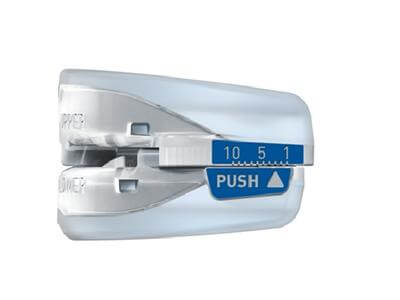
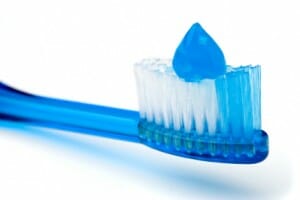 The manufacturer of the SnoreRx suggests cleaning this device just as you would normally clean your teeth – using warm water, a toothbrush, and toothpaste. Apply a pea-sized amount of toothpaste with a soft bristle toothbrush. Wet the SnoreRx with lukewarm water and brush the device while paying close attention to areas such as the teeth indentions.
The manufacturer of the SnoreRx suggests cleaning this device just as you would normally clean your teeth – using warm water, a toothbrush, and toothpaste. Apply a pea-sized amount of toothpaste with a soft bristle toothbrush. Wet the SnoreRx with lukewarm water and brush the device while paying close attention to areas such as the teeth indentions.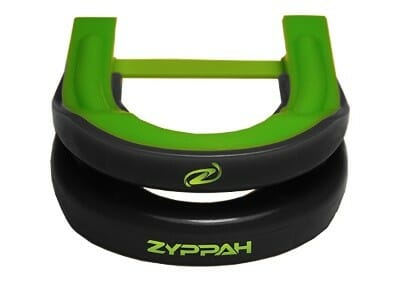
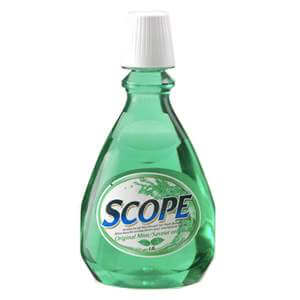 The Zyppah Rx should be cleaned using a soft toothbrush along with an ounce or so of mouthwash. Dip your toothbrush into a small container of full strength mouthwash and carefully brush the device. Be sure to clean in all hidden areas which may harbor bacteria. Once cleansed, rinse the Zyppah off and allow to air dry before storing away.
The Zyppah Rx should be cleaned using a soft toothbrush along with an ounce or so of mouthwash. Dip your toothbrush into a small container of full strength mouthwash and carefully brush the device. Be sure to clean in all hidden areas which may harbor bacteria. Once cleansed, rinse the Zyppah off and allow to air dry before storing away.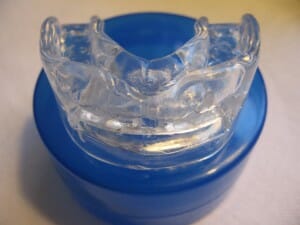
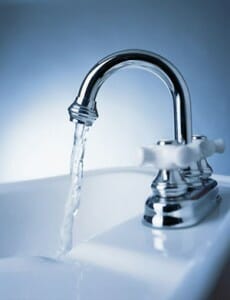 The manufacturer of the RIPsnore offers one simple suggestion when it comes to cleaning the device – “place it under fresh running water”. I tend to disagree with this cleaning advice. However, this is exactly what the manufacturer suggests. Nonetheless, allow the device to completely dry before storing in the provided container.
The manufacturer of the RIPsnore offers one simple suggestion when it comes to cleaning the device – “place it under fresh running water”. I tend to disagree with this cleaning advice. However, this is exactly what the manufacturer suggests. Nonetheless, allow the device to completely dry before storing in the provided container.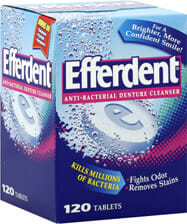 Each day after using the AveoTSD should be rinsed under warm water and turned upside-down to allow to dry. In addition to the daily rinsing, the manufacturer advises that the device is submerged in a denture cleaning solution. Such a solution is created using denture cleaning tablets which can be purchased at your local drug store.
Each day after using the AveoTSD should be rinsed under warm water and turned upside-down to allow to dry. In addition to the daily rinsing, the manufacturer advises that the device is submerged in a denture cleaning solution. Such a solution is created using denture cleaning tablets which can be purchased at your local drug store.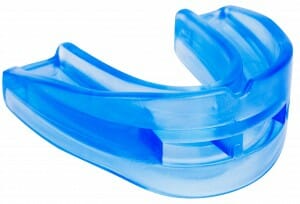
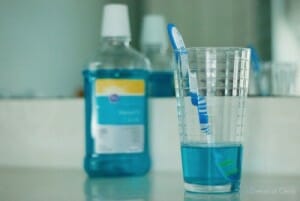 There are two ways in which you are able to clean the SleepPro. This applies to any of the SleepPro products including the Standard, SFA or the Custom.
There are two ways in which you are able to clean the SleepPro. This applies to any of the SleepPro products including the Standard, SFA or the Custom. The Cause: In most cases, those who have issues with their snoring mouthpiece falling out simply have not given their body a chance to adjust to the new device. These devices tend to work their self out of the mouth (or from the tip of the tongue in the case of a TSD) while asleep. Allowing time for adjustment often solves this issue.
The Cause: In most cases, those who have issues with their snoring mouthpiece falling out simply have not given their body a chance to adjust to the new device. These devices tend to work their self out of the mouth (or from the tip of the tongue in the case of a TSD) while asleep. Allowing time for adjustment often solves this issue. The Cause: If you are still having issues with your mouthpiece falling out after a 7-10 day adjustment period, it may necessary to make some minor adjustments to allow for a closer fit. Depending on the manufacturer, you may be able to trim, remold, stretch, or make advancement adjustments. Before performing any modifications, be sure to read over the instructions provided by the manufacturer.
The Cause: If you are still having issues with your mouthpiece falling out after a 7-10 day adjustment period, it may necessary to make some minor adjustments to allow for a closer fit. Depending on the manufacturer, you may be able to trim, remold, stretch, or make advancement adjustments. Before performing any modifications, be sure to read over the instructions provided by the manufacturer.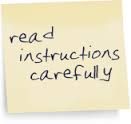 The Cause: Occasionally a snorer will attempt to use a product without first reading over and understanding the fitting instructions. While this may be the least common of the three reasons, it’s something that should still be taken into consideration. If you have allowed time for an adequate adjustment period, have fine-tuned your device and are still having issues with it falling out, you may want to review the fitting instructions.
The Cause: Occasionally a snorer will attempt to use a product without first reading over and understanding the fitting instructions. While this may be the least common of the three reasons, it’s something that should still be taken into consideration. If you have allowed time for an adequate adjustment period, have fine-tuned your device and are still having issues with it falling out, you may want to review the fitting instructions. If you carefully examine the above causes and corrective action, you will find that 95% of the time this issue will resolve itself. However, it could be the case that you are not a good candidate for an oral appliance. Before throwing in the towel, take advantage of the customer service that is provided by the company who produces your particular device. Most of them are eager and more than willing to assist you with any issues that you may be experiencing. They may, for instance, send you a larger (or smaller) model that may offer a better fit or perhaps give additional advice to help prevent their device from falling out of your mouth.
If you carefully examine the above causes and corrective action, you will find that 95% of the time this issue will resolve itself. However, it could be the case that you are not a good candidate for an oral appliance. Before throwing in the towel, take advantage of the customer service that is provided by the company who produces your particular device. Most of them are eager and more than willing to assist you with any issues that you may be experiencing. They may, for instance, send you a larger (or smaller) model that may offer a better fit or perhaps give additional advice to help prevent their device from falling out of your mouth. After hearing about these anti-snoring gadgets, the first place that most people look is in their local pharmacy or retail superstores such as CVS, Walgreens, Riteaid, Target, Walmart, or a number of other local establishments. This is certainly the path that I took several years ago when initially introduced to these types of products. Before coming home empty-handed, I purchased what appeared to resemble a stop snoring mouthpiece from Walmart. Unfortunately, this product turned out to be a nightguard. It turns out that the two are not at all the same.
After hearing about these anti-snoring gadgets, the first place that most people look is in their local pharmacy or retail superstores such as CVS, Walgreens, Riteaid, Target, Walmart, or a number of other local establishments. This is certainly the path that I took several years ago when initially introduced to these types of products. Before coming home empty-handed, I purchased what appeared to resemble a stop snoring mouthpiece from Walmart. Unfortunately, this product turned out to be a nightguard. It turns out that the two are not at all the same.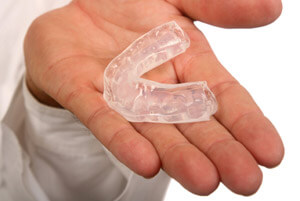 Sports guards or teeth grinding night guards often closely resemble their anti-snoring counterpart but the reality is that they are not quite the same. A sports guard is designed to help protect your teeth from injury while playing contact sports. They are typically one piece and fit around the upper teeth. When in place, they prevent the teeth from making contact with each other in the event of impact while playing sports. These types of products offer no jaw-advancing feature whatsoever. Nightguards are similar to the sports guard but are designed to prevent teeth grinding or
Sports guards or teeth grinding night guards often closely resemble their anti-snoring counterpart but the reality is that they are not quite the same. A sports guard is designed to help protect your teeth from injury while playing contact sports. They are typically one piece and fit around the upper teeth. When in place, they prevent the teeth from making contact with each other in the event of impact while playing sports. These types of products offer no jaw-advancing feature whatsoever. Nightguards are similar to the sports guard but are designed to prevent teeth grinding or 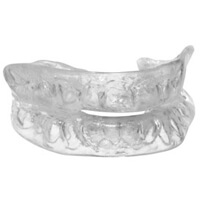 The snoring mouthpiece (also known as an oral appliance) on the other hand is created by taking an impression of both the lower and upper teeth. While each product varies somewhat in design, they all work by holding the lower jaw in the forward position. By doing so, airway muscles are tightened which prevents the sounds associated with snoring. The sports guard or dental night guard are simply not designed to keep the lower jaw forward. Keep in mind, they can not be modified to do so. The only solution is to buy a mouthpiece that was specifically created to perform this particular function.
The snoring mouthpiece (also known as an oral appliance) on the other hand is created by taking an impression of both the lower and upper teeth. While each product varies somewhat in design, they all work by holding the lower jaw in the forward position. By doing so, airway muscles are tightened which prevents the sounds associated with snoring. The sports guard or dental night guard are simply not designed to keep the lower jaw forward. Keep in mind, they can not be modified to do so. The only solution is to buy a mouthpiece that was specifically created to perform this particular function. In most countries (particularly the US) such anti-snoring products cannot be found in retail stores. There certainly has to be an explanation as to why this is the case. Well, there is and it has to do with the classification of this particular gadget. Technically speaking, the Food and Drug Administration (FDA) considers these a “medical device” and has placed certain restrictions on the sale of such products. In short, the FDA uses a classification system and the snoring mouthguard is classified as a Class II medical device that should be sold on a prescription-only basis. Fortunately, there are a few loopholes that are used by manufacturers when selling directly to consumers. These “exceptions” allow them to sell directly to the end consumer in a legal fashion. For instance, you may be asked to fill out a questionnaire in order to determine eligibility to purchase their product. There are other workarounds that are commonly used, however, this is beyond the scope of our discussion.
In most countries (particularly the US) such anti-snoring products cannot be found in retail stores. There certainly has to be an explanation as to why this is the case. Well, there is and it has to do with the classification of this particular gadget. Technically speaking, the Food and Drug Administration (FDA) considers these a “medical device” and has placed certain restrictions on the sale of such products. In short, the FDA uses a classification system and the snoring mouthguard is classified as a Class II medical device that should be sold on a prescription-only basis. Fortunately, there are a few loopholes that are used by manufacturers when selling directly to consumers. These “exceptions” allow them to sell directly to the end consumer in a legal fashion. For instance, you may be asked to fill out a questionnaire in order to determine eligibility to purchase their product. There are other workarounds that are commonly used, however, this is beyond the scope of our discussion. The best place, and in many cases the only place, that you can purchase these anti-snoring devices are directly from the manufacturer by visiting their website or by a phone call. While having to special order one of these gadgets and having it shipped directly to your home is not the most convenient of all things, it’s the only way that you are able to purchase one. The current laws have been in place for several years and will likely not change anytime in the near future. There is some good that comes from all of this. Since you are purchasing straight from the manufacturer and not a retailer, you can expect somewhat of a break on the price.
The best place, and in many cases the only place, that you can purchase these anti-snoring devices are directly from the manufacturer by visiting their website or by a phone call. While having to special order one of these gadgets and having it shipped directly to your home is not the most convenient of all things, it’s the only way that you are able to purchase one. The current laws have been in place for several years and will likely not change anytime in the near future. There is some good that comes from all of this. Since you are purchasing straight from the manufacturer and not a retailer, you can expect somewhat of a break on the price. If you take a look on eBay you will likely find mouthpieces for as little as $10 shipped to your door. While this may sound like a real bargain, these inexpensive products typically fall into one of two categories:
If you take a look on eBay you will likely find mouthpieces for as little as $10 shipped to your door. While this may sound like a real bargain, these inexpensive products typically fall into one of two categories: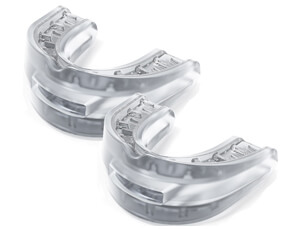
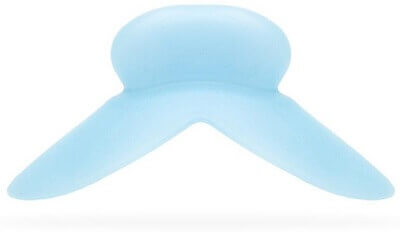
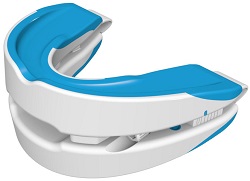
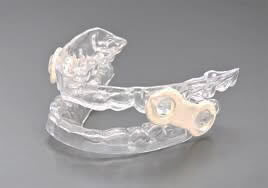
 In the end, most people simply want to know if they can substitute an OTC snoring mouthpiece for a CPAP machine. After all, over-the-counter devices often sell for a fraction of the price and seem to be very similar in nature. The answer to this question really depends on your individual circumstances. There are individuals out there who have had success substituting one for the other. However, one should not make this decision alone. There are many factors that determine whether or not you may be a good candidate for a substitution. Teeth and gum health, severity and type of apnea, along with several other factors will help doctors to determine this. Some doctors are agreeable when it comes to using internet ordered devices to treat mild to moderate cases of OSA while others are completely against the idea (sometimes due to reasons of monetary loss). If you are interested in using a snoring mouthpiece to treat your sleep apnea, first ask your doctor if there is a particular device that he or she is familiar with and would recommend. If not, do some research and pick out a potential device that you are interested in. Gather information on the device and ask your doctor for their professional opinion before proceeding any further. This website offers a
In the end, most people simply want to know if they can substitute an OTC snoring mouthpiece for a CPAP machine. After all, over-the-counter devices often sell for a fraction of the price and seem to be very similar in nature. The answer to this question really depends on your individual circumstances. There are individuals out there who have had success substituting one for the other. However, one should not make this decision alone. There are many factors that determine whether or not you may be a good candidate for a substitution. Teeth and gum health, severity and type of apnea, along with several other factors will help doctors to determine this. Some doctors are agreeable when it comes to using internet ordered devices to treat mild to moderate cases of OSA while others are completely against the idea (sometimes due to reasons of monetary loss). If you are interested in using a snoring mouthpiece to treat your sleep apnea, first ask your doctor if there is a particular device that he or she is familiar with and would recommend. If not, do some research and pick out a potential device that you are interested in. Gather information on the device and ask your doctor for their professional opinion before proceeding any further. This website offers a 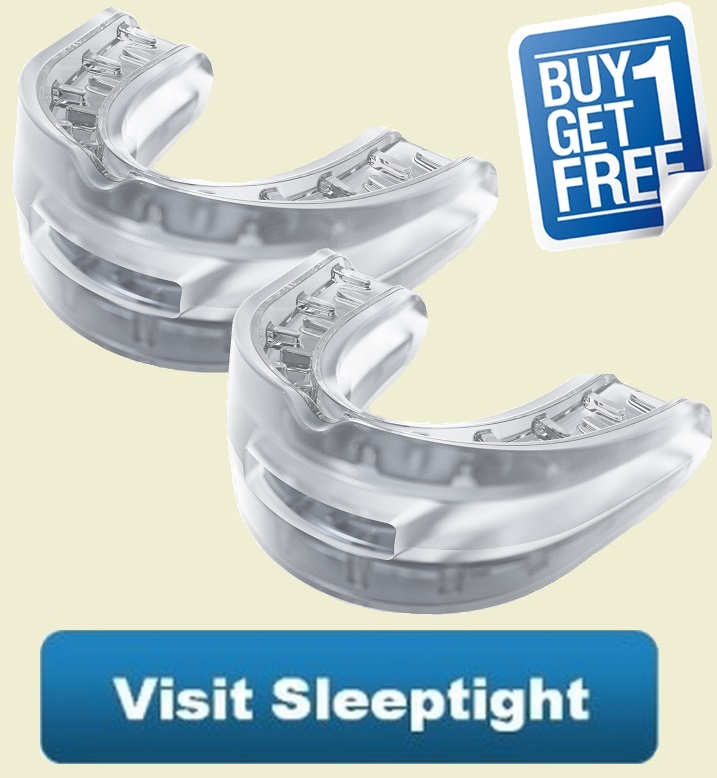
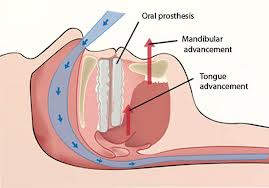 Before discussing whether or not a mouthpiece is a good fit, it’s important to first understand exactly how most mouthpieces work. Whether you are interested in the
Before discussing whether or not a mouthpiece is a good fit, it’s important to first understand exactly how most mouthpieces work. Whether you are interested in the 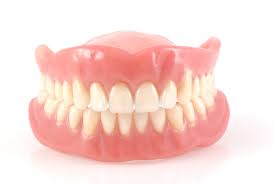 One of the most common questions often asked by snorers is whether or not one with
One of the most common questions often asked by snorers is whether or not one with 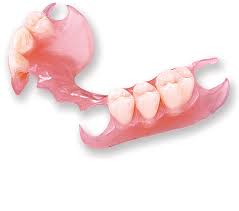
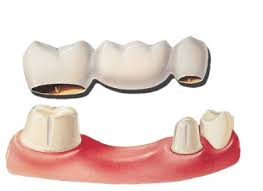 Perhaps you have bridge or crown work and would like to know whether or not a mouthpiece is a good idea. As with partial dentures, the answer greatly depends on the position of your bridge(s) or crown(s) and the overall health of your remaining natural teeth. Those who have bridges or crowns located at the rear of the gums would certainly be a better candidate than those who’ve had work done on the front teeth. Strong, healthy teeth at the front of the mouth are a requirement which should not be overlooked.
Perhaps you have bridge or crown work and would like to know whether or not a mouthpiece is a good idea. As with partial dentures, the answer greatly depends on the position of your bridge(s) or crown(s) and the overall health of your remaining natural teeth. Those who have bridges or crowns located at the rear of the gums would certainly be a better candidate than those who’ve had work done on the front teeth. Strong, healthy teeth at the front of the mouth are a requirement which should not be overlooked.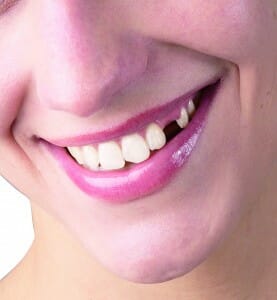
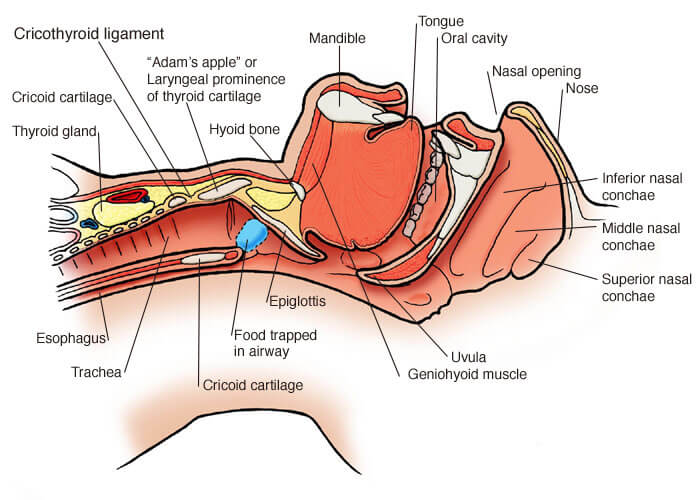 In order to fully understand how the GMSS works, you must first understand how the airway can effect snoring. As we sleep, the muscle mass in the airway tends to relax which often results in a partial blockage of this already narrow area of the throat. In some cases, the narrowing can completely cut off the flow of oxygen. This potentially dangerous condition is known as sleep apnea and should be diagnosed and treated by a
In order to fully understand how the GMSS works, you must first understand how the airway can effect snoring. As we sleep, the muscle mass in the airway tends to relax which often results in a partial blockage of this already narrow area of the throat. In some cases, the narrowing can completely cut off the flow of oxygen. This potentially dangerous condition is known as sleep apnea and should be diagnosed and treated by a  You genetics. Snoring may simply be caused by your genetics. Physical features that cause snoring could have easily have been passed down from your mother, father or both parents. Individuals who have a malocclusion (overbite) have a jaw that’s naturally recessed which can ultimately cause a narrowing airway. It’s also possible that something as simple as the shape of your airway is to blame for a snoring problem.
You genetics. Snoring may simply be caused by your genetics. Physical features that cause snoring could have easily have been passed down from your mother, father or both parents. Individuals who have a malocclusion (overbite) have a jaw that’s naturally recessed which can ultimately cause a narrowing airway. It’s also possible that something as simple as the shape of your airway is to blame for a snoring problem.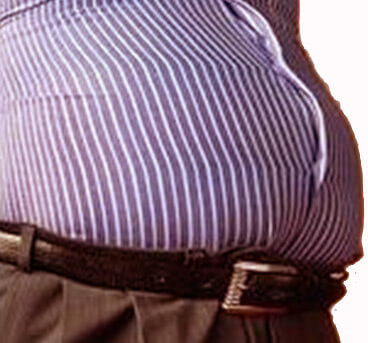 Being overweight. Here’s one that you may not have expected but being overweight can cause snoring issues. Having a few extra pounds means that extra fat deposits tend to accumulate around the neck and while laying down the fat pushes against your airway, causing a partial collapse or complete closure in some cases. The effects can be heightened depending on the position of your head.
Being overweight. Here’s one that you may not have expected but being overweight can cause snoring issues. Having a few extra pounds means that extra fat deposits tend to accumulate around the neck and while laying down the fat pushes against your airway, causing a partial collapse or complete closure in some cases. The effects can be heightened depending on the position of your head. It turns out that there are actually two clinically proven types of mouthpieces that can be used to prevent snoring. The traditional mandibular advancement device or MAD works by tightening the muscles inside the throat where the airway often becomes narrow by holding the mandible in the advanced or forward position. Doing so also pulls the muscles which surround the airway tight. With the tongue stabilizing devices such as the GMSS, the tongue itself is held forward, not the jaw. This method actually packs a one-two punch as it not only opens up the airway but also prevents the tongue from falling back into the throat which is yet another cause of snoring for some people.
It turns out that there are actually two clinically proven types of mouthpieces that can be used to prevent snoring. The traditional mandibular advancement device or MAD works by tightening the muscles inside the throat where the airway often becomes narrow by holding the mandible in the advanced or forward position. Doing so also pulls the muscles which surround the airway tight. With the tongue stabilizing devices such as the GMSS, the tongue itself is held forward, not the jaw. This method actually packs a one-two punch as it not only opens up the airway but also prevents the tongue from falling back into the throat which is yet another cause of snoring for some people.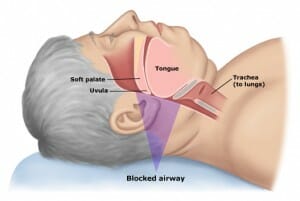 The Good Morning Snore Solution attaches to the end of your tongue using a suction bulb. The tongue is held forward between the teeth and the lips. Holding the tongue forward also stretches the muscles in the airway as we discussed earlier. Muscles are stretched – the airway tightens up and open – tissue no longer flaps around – problem solved!
The Good Morning Snore Solution attaches to the end of your tongue using a suction bulb. The tongue is held forward between the teeth and the lips. Holding the tongue forward also stretches the muscles in the airway as we discussed earlier. Muscles are stretched – the airway tightens up and open – tissue no longer flaps around – problem solved! If you are interested in learning more about this device I have created a
If you are interested in learning more about this device I have created a